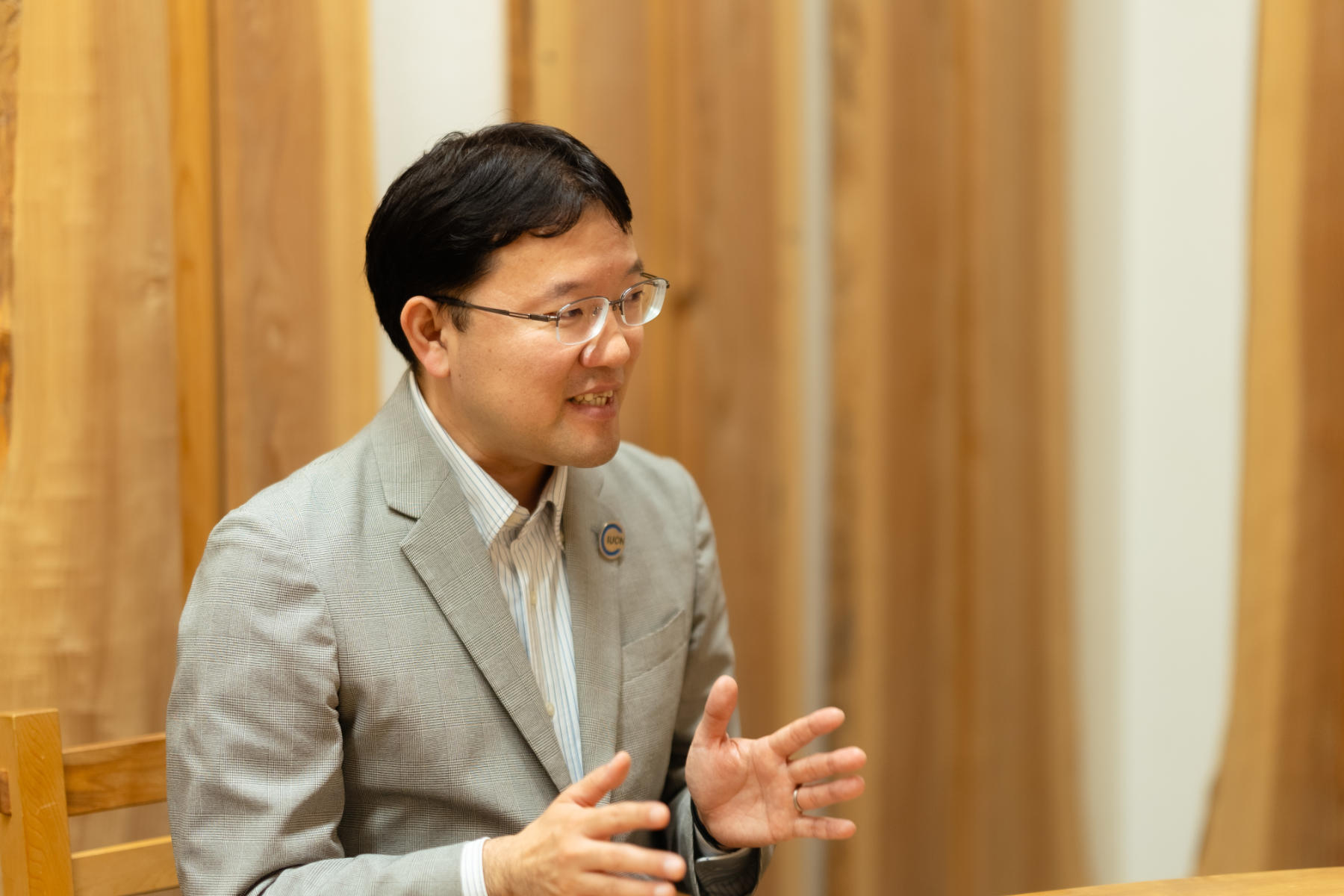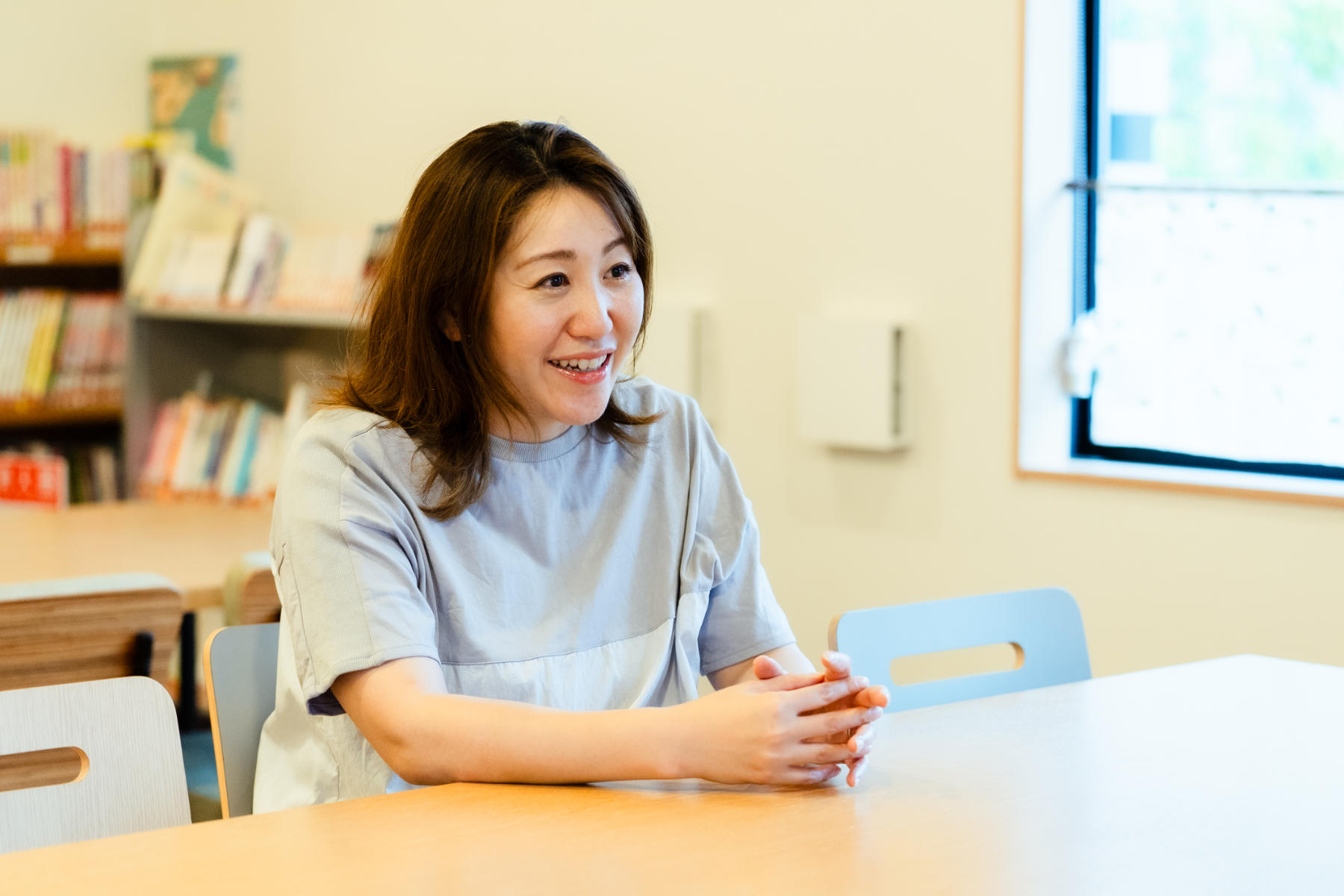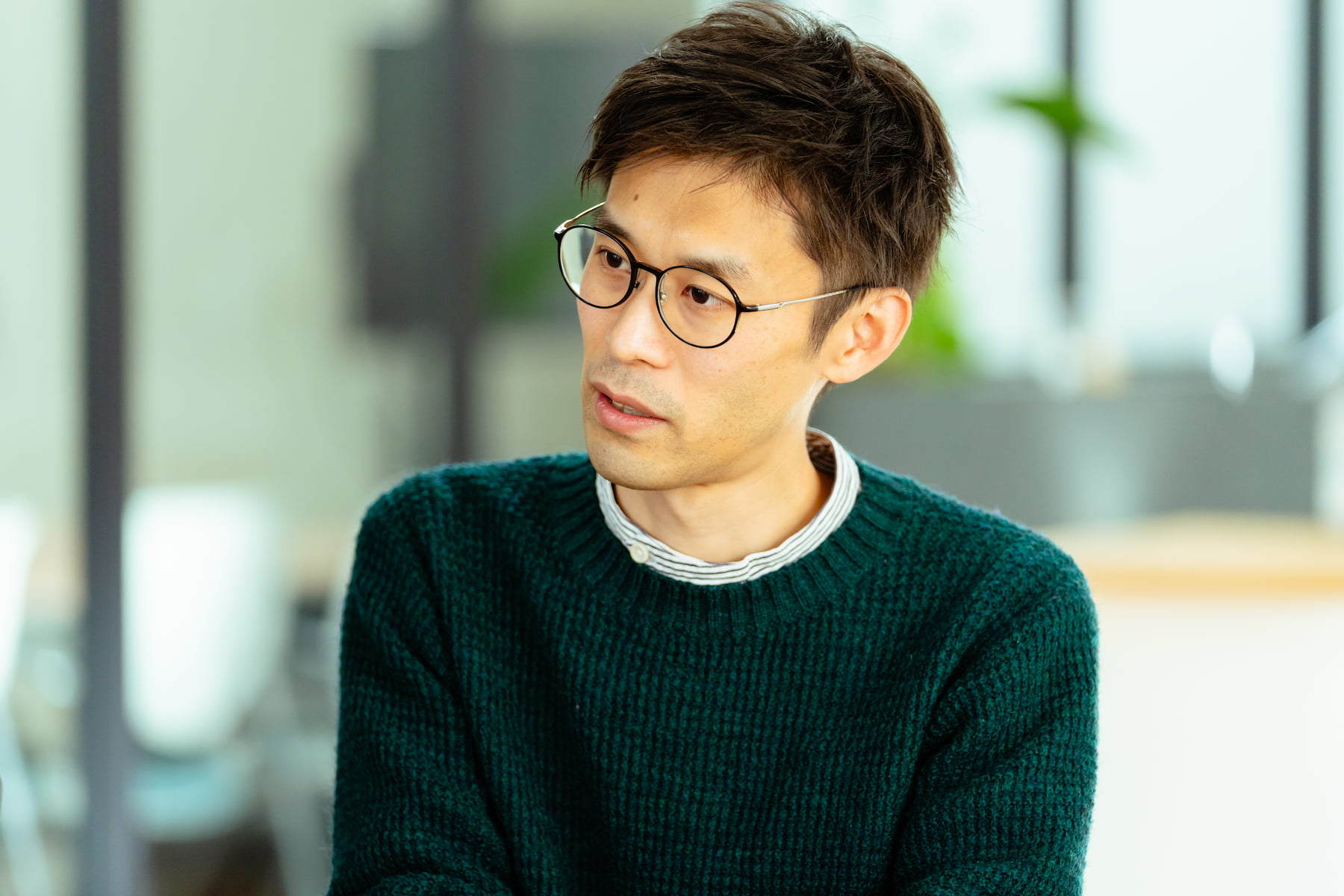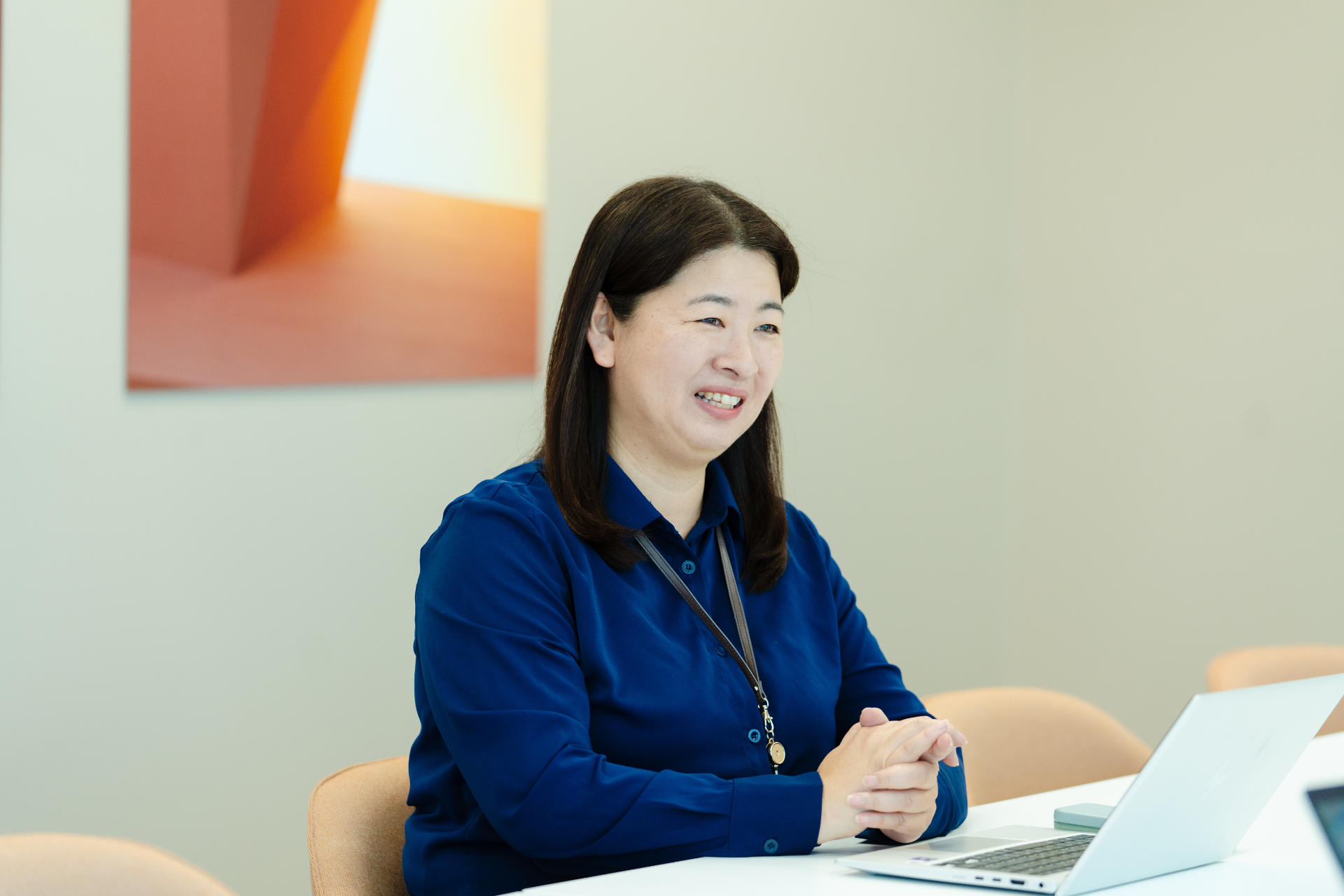CASE 09
Taki Corporation
(June 2018)
Making a way to social issues with art.
Taki Corporation is a Design Firm that suggests how to “give thoughts a shape”, dealing with advertisement production for anything from newspapers, magazines, posters to branding for companies and products. In March 2018, Mr. Kenji Fujii, a creative director of Taki Corporation contacted the “chart project”, one of the projects that Hitoshizuku launched. He suggested that our “chart project” should join “Misia’s Satoyama Museum 2018”, an art & music event that they were also joining. We asked him why he wanted chart project to participate in that, and for thoughts on his artworks as one of the “chartists” (artists who make artworks for chart project).
“It’s an important issue that I want to tell many people about but also it’s difficult and doesn’t get much attention. I thought “chart project®” could overcome those obstacles.”
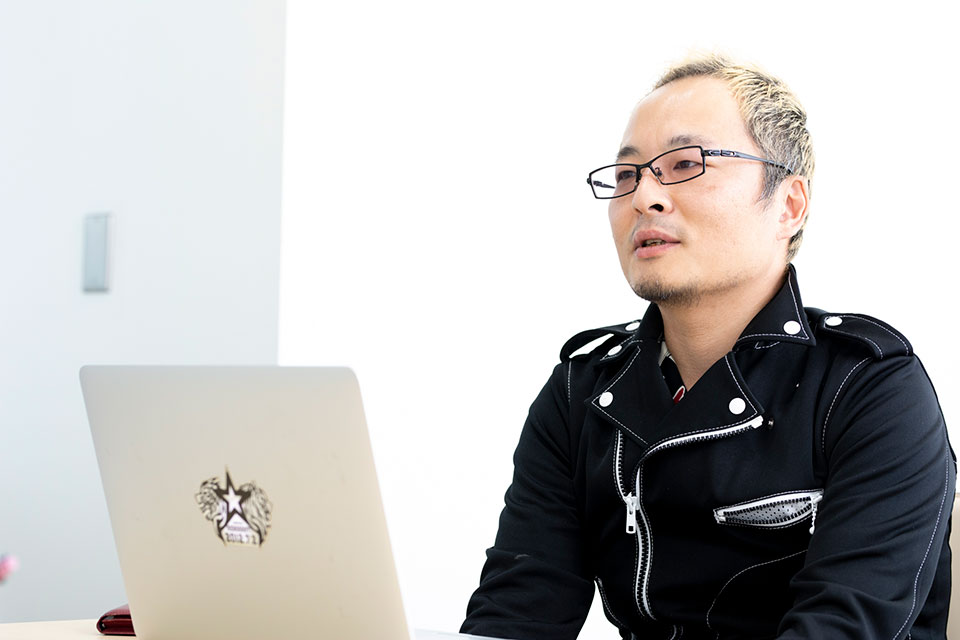
Mr. Kenji Fujii, creative director of Taki Corporation
Ushijima of Hitoshizuku (Ushijima):
Thank you for contacting our chart project. chart project is a project where artists make artworks, imagining a solution to a social issue, with using graph lines of the data of the issue. The intent is to positively convey social issues or their data, which is often viewed negatively and people don’t want to face its truths. The artwork can be any form – something to see, touch, display, carry, wear, share, etc. and can go beyond two-dimensional works.
However, chart project didn’t have any records or results yet at that time. In what part were you interested in it and invited us?
Taki Corporation, Creative Director, Mr. Kenji Fujii (Mr. Fujii):
I’d been interested in chart project since I heard from Mr. Kokubo that he was going to launch a project like that. For many people, topics like environmental and social issues feel difficult, and it’s not easy to make it fun when we talk about them. As a result, it tends to be like, only those who are seriously concerned about those issues discuss them.
Even though research agencies or the government publicizes the research or statistical data, and people intellectually realize they’re important issues, it’s difficult for them to get emotionally invested in them. So, I thought that chart project, which aims to lower that barrier, was very interesting and an important idea.
Ushijima:
I see. When was the first time Kokubo talked to you about the project?
Mr. Fujii:
It was about a year ago when I talked to you about joining our event.
Ushijima:
You had kept our project in mind during that whole year?!
Mr. Fujii:
Yes, of course! I’d been thinking if there would be any chance.
Ushijima:
Taki Corporation has a project team for CSR activities. I heard that our chart project joining it was a part of that project. Would you briefly explain about the project for us?
Mr. Fujii:
We, Taki Corporation, are a design firm whose main work is designing and producing advertisements. In the company, we launched “Taki Smile Design Labo (hereinafter Smile Design Labo)” to think and realize what “social contributions [we can make] through design” by ourselves.
It was five to six years ago and our president at that time was the leader [of the project]. There was an in-house staff recruitment, and I applied for it. I’ve been a member since then.
Ushijima:
The concept of “social contribution through design” is quite similar to chart project whose concept is “showing social issues through art”. Through the work of Smile Design Labo, were there any solutions to social issues that could only be suggested through design?
Mr. Fujii:
That’s always difficult. What I feel now is the idea that we had back then about doing something with design was quite superficial, and social contribution or solving social issues is not an easy thing to do. It’s such an obvious thing to say, though. It doesn’t work with our usual way of thinking when we work, such as deciding an appeal point, production, and then working for gaining wider recognition… We can’t easily reach an answer, and we find ourselves thinking, how far should we go, or whether there is any meaning for this.
But one thing I can say is that design can create more chances to let something be seen or known by a wider range of people. Through Smile Design Labo, we have opportunities to talk with people from various fields, and what they feel difficult is how to tell or show. We’re specialized in presenting things by visual materials or videos, so I think we can be a help in making their activities and thoughts seen by many people.
“What is this?” – a trick to spurs people’s interest starts from that question
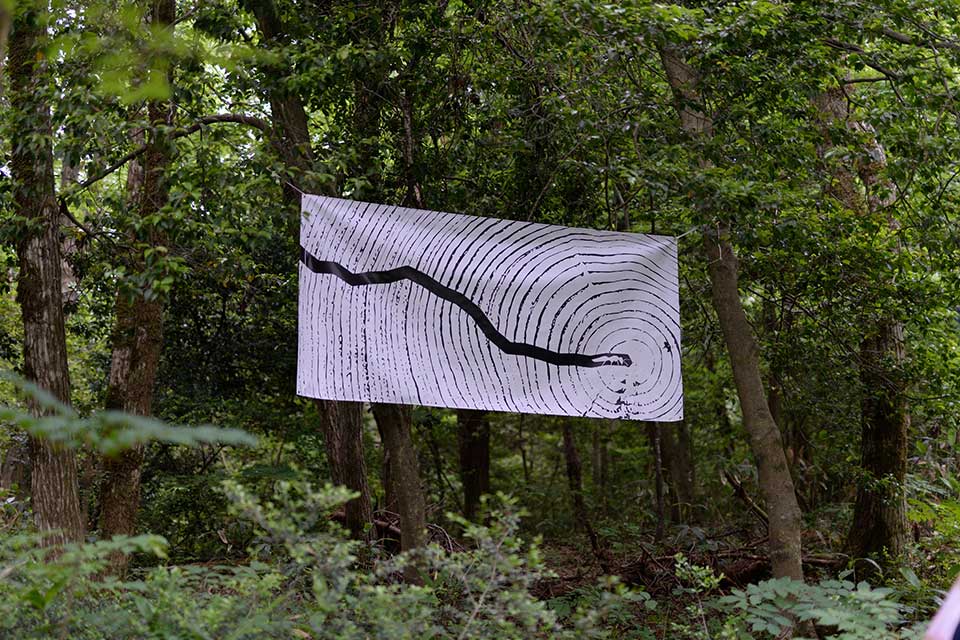
A “chartwork” using a graph line from “Changes in the Population of the Forestry Industry in Ishikawa Pref.” exhibited at “Misia’s Satoyama Museum 2018”. Five artworks each made out of five different graphs including this one were displayed in the woods.

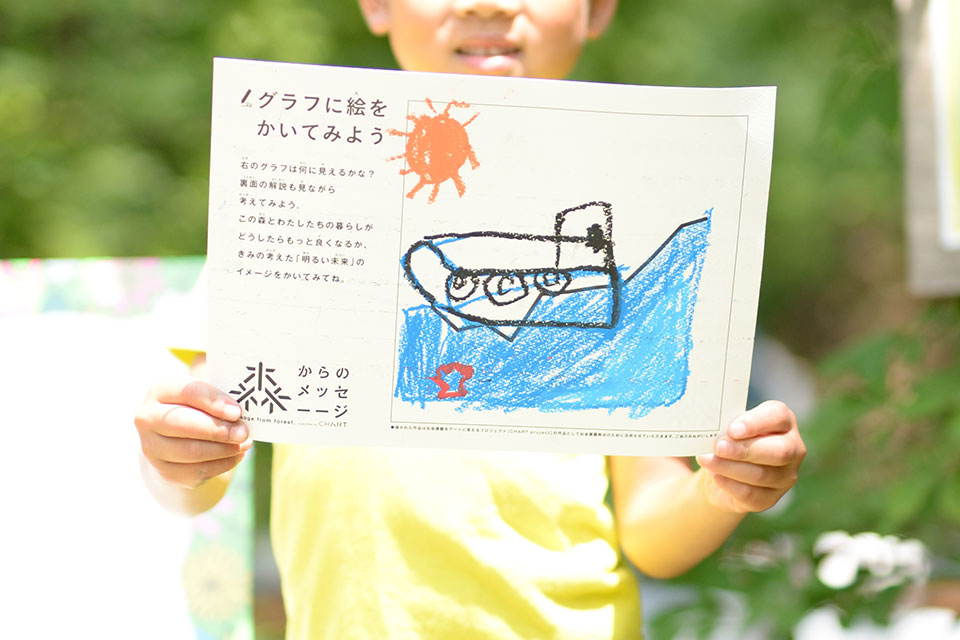
From the workshop event. Participants drew an image of a “bright future” on the print-out of a graph.
Ushijima:
This time, we joined “Misia’s Satoyama Museum 2018” which was held at Ishikawa Prefectural Forest Park on June 9, 2018, as a collaboration of Smile Design Labo and chart project. During the event, we had two programs: the exhibition of chartworks that you made using five environment-related graphs, and the workshop where visitors drew or painted a picture using those graph lines.
When you suggested showing artworks with using the forest as an art museum, we noticed a possibility of the project that we hadn’t seen. We realized that chart project is a platform where people make artworks, imagining a solution to a social issue, with using graph lines of the data of the issue, and how they make and develop the artwork are really left completely up to the artist.
Mr. Fujii:
The concept of “Misia’s Satoyama Museum” is “Feel nature, Enjoy art and music”. We believe that when we think about nature or environmental issues, it is very important to go to the place where those issues are happening, so we wanted to do something we can do only in the forest.
That being said, it tends to be like, a panel explaining an environmental issue being put up in the forest, or pictures with text saying like “this kind of issue is happening”, but it’s not easy to get children interested with those things. So, to break through it, I thought it would be interesting if it starts with kids finding artworks in forest and think “what is this?”. And that matched perfectly with the context of your chart project, then I contacted you.
Ushijima:
Making people think “what is this?” is what chart project thinks is important. In the workshop where visitors draw a picture on a worksheet with graph lines on it, when we showed them the original graph and told them there were artworks using that line from the same graph in the forest, we received a great response.
“Wow! That’s what this shows! I was looking at them thinking what they were. I’ll look at them again on my way back!” We received many responses like this. I strongly felt that we can lead people to think “let’s look more carefully” by connecting something curious but unknown on their mind to the “Aha!” moment by finding out what it is.
It is the artist themselves who receives a big change through chart project.
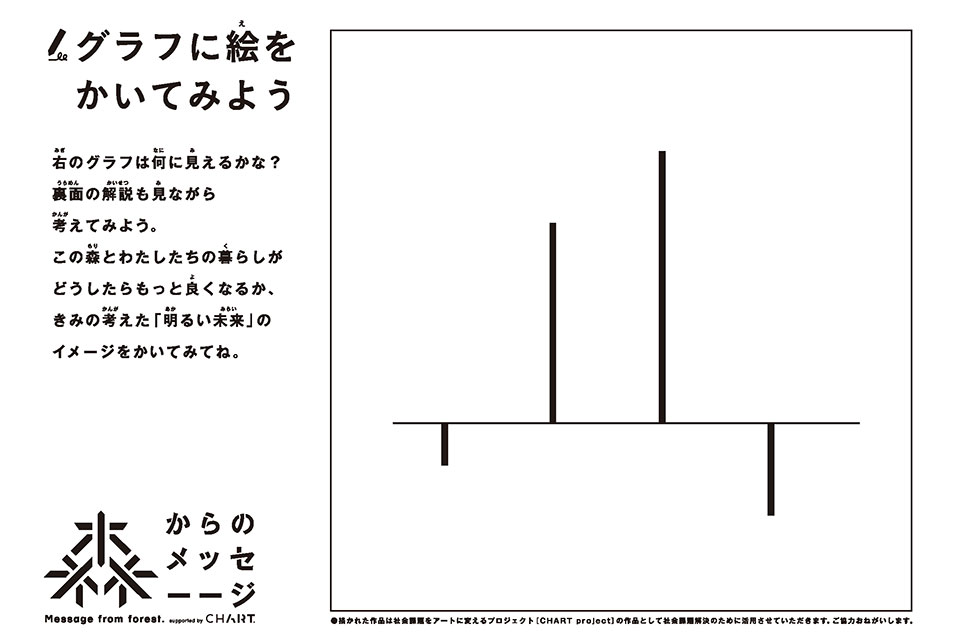
A graph that shows the change in the ratio of greenhouse gases to the reduction goal by each section. This worksheet was actually handed out in the workshop at Misia’s Satoyama Museum.
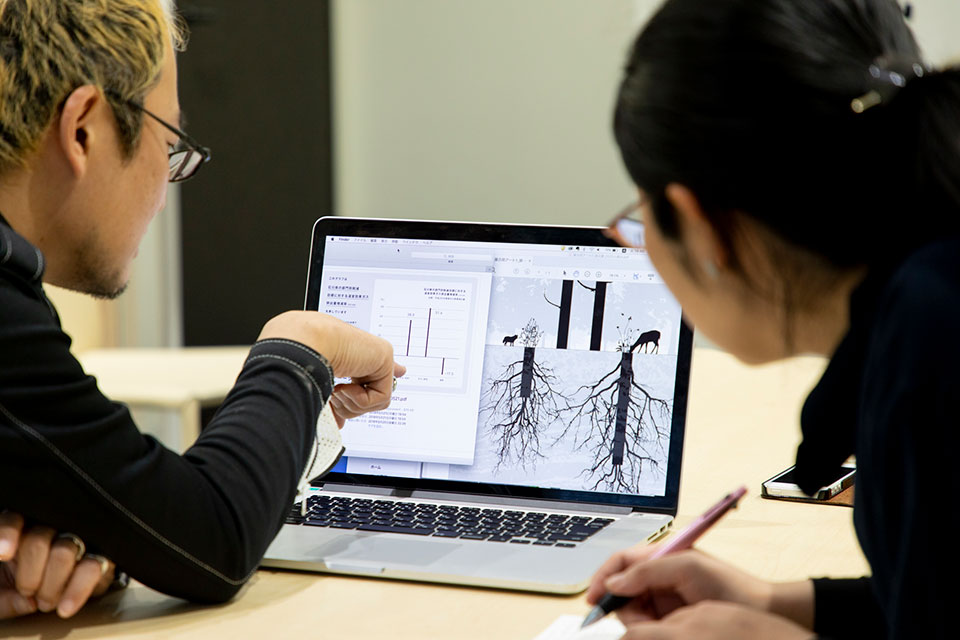
The artwork that Mr. Fujii made using the graph shown above. On those downward graphs which shows reduction of greenhouse gases, tree roots and new leaves are growing; while trees are dying on those upward graphs that show increase of the gases.
Ushijima:
You invited us to collaborate with the expectation of lowering the barriers to communicate social issues to people. Thinking back, how was the result? Did you have anything you thought we can do better in the future?
Mr. Fujii:
With regards to myself, while making those artworks, it was interesting to find out that I came to think deeper about the graphs and the issues behind them than I’d expected. First, I started it quite casually, thinking like, I would paint some color along those graphs, or I want to make a collage with photographs, or it would be okay if the contents of the graph were expressed visually somehow – but once I started to create, it made me stop and think whether it expressed what the graph would want to say properly with this visual, a lot.
Ushijima:
I heard similar things from other artists! It is one of the important points of this project that people who make an artwork become conscious about the issue shown by the graph. I think the feelings or viewpoints of the artists change by making a “chartwork”, and naturally their actions will change as well.
It’s great that my work helps someone in a way I don’t know
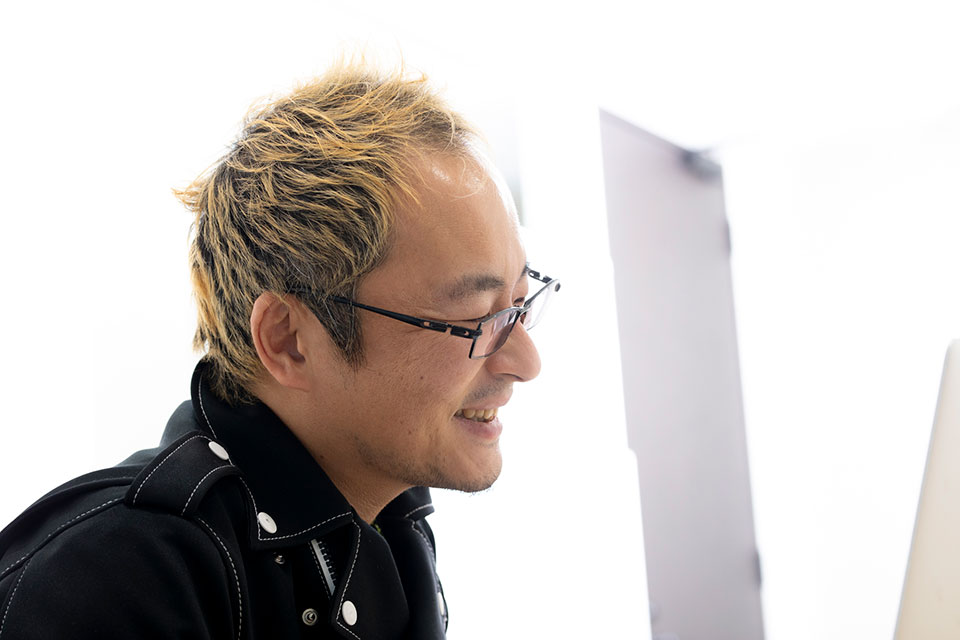
Ushijima:
Not only at the Misia’s Satoyama Museum, you’ve been working as a “chartist”. You’ve made five artworks, and we’ve exhibited them at many places such as exhibitions in Osaka and Tokyo. How do you feel about that? Would you tell us what is it like to be a “chartist”?
Mr. Fujii:
I’m very thankful that what I made is treated as something valuable and worth exhibiting, and many people see them. It’s like my children is helping something…
I suppose artists and creators are those who cannot live without believing “my work is not for self-satisfaction, but for something of someone, and there’s some people who will be happy”, and chart project satisfies that at some level when they finish making a work, or there’s a premise that it helps when the artwork is made, so there’s so much less struggle like “I’m just drawing something I like for myself”. In that sense, I think it is mentally easy to be part of. Because there’s already a meaning to draw or paint.
Ushijima:
We’re very grateful that you think like that. Starting from the exhibition in Sweden, as a project that connects those who have something they want to tell, artists who have power to tell and people who receive them, we’d like to broaden the field of chart project inside and outside Japan even after 2019.
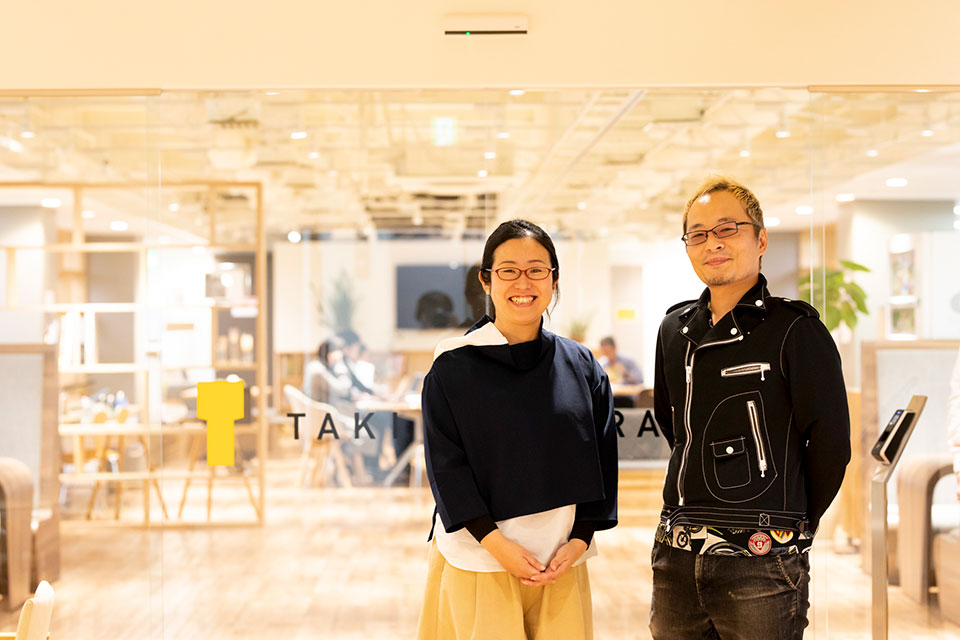
Mr. Fujii and Ushijima of Hitoshizuku
Photograph: Chisato Hikita
Editing: Takako Chiba
RECENT WORKS
| Name | Hitoshizuku Inc. |
| Address | 33 Nihonodori Naka-ku Yokohama Kanagawa 231-0021 JAPAN |
| Branch | Hamacho Odawara Kanagawa 250-0004 JAPAN |
| Phone | 81 045 900 8611 |
| info@hitoshizuku.co.jp |
| President | Hiroshi Kokubo |
| Established | March 2016 |
| Capital | 3,000,000yen |
| Business | Advertising & Public Relations Agency Planning & Produciton of Social Good Projects |
| Lawyer | Junna Tei / Yokohama First Law Office |
| Tax Advisor | Satoru Motokoide / Uniques Money Advisory |
| Labor and Social Security Attorney Office Work Innovation | |


